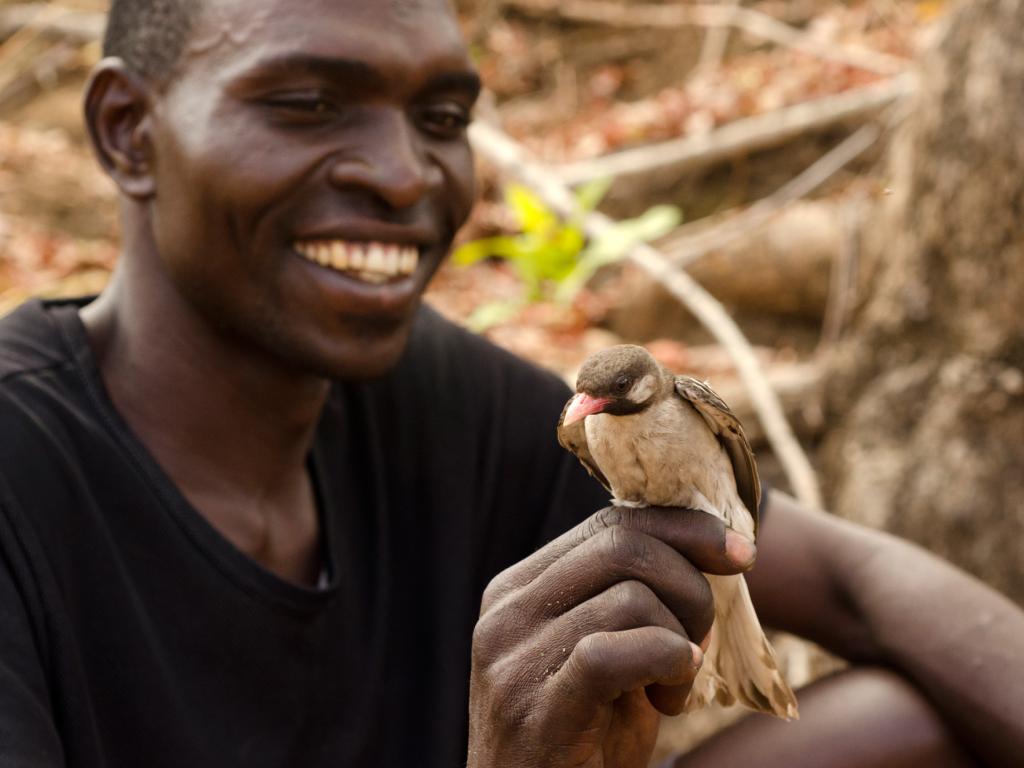Reciprocal communication in human-honeyguide mutualism

The relationship between Greater Honeyguides (Indicator indicator) and human honey-hunters is a rare example of cooperation between our own species and a free-living wild animal. Honeyguides eat wax and know where bees’ nests are located; humans have fire and tools to subdue the bees and open the nest, exposing beeswax for the honeyguides and honey for the humans. A pioneering study by Dr Hussein Isack in Kenya in the 1980s confirmed the remarkable fact that honeyguides communicate with humans, using special calls and behaviour to lead honey-hunters to bees’ nests. Now, new work by Claire Spottiswoode from the FitzPatrick Institute of African Ornithology and the University of Cambridge (in collaboration with Dr Colleen Begg and Keith Begg of the Niassa Carnivore Project shows that humans communicate back to honeyguides too: Yao honey-hunters in Mozambique’s Niassa National Reserve https://www.facebook.com/NiassaReserve use special calls to signal to honeyguides that they’re eager to follow, and honeyguides use this information to choose partners who are likely to be good collaborators. It’s a two-way conversation between our own species and a wild animal, from which both partners benefit.
Honeyguides are not only cooperative mutualists, but also brutal brood parasites of other birds, which has been the focus of joint Fitz-Cambridge research in Zambia for many years – see www.africancuckoos.com for more information about this project.
The research was published in Science today: Spottiswoode, C.N., Begg, K.S. & Begg, C.M. 2016. Reciprocal communication in human-honeyguide mutualism. Science 353: 387-389. Science’s news article about the study (free to access) is in the same issue.
A 3 minute video has been produced by the BBSRC who co-funded the work together with the DST-NRF Centre of Excellence at the FitzPatrick Institute http://science.sciencemag.org/content/353/6297/335.full
A comprehensive press release from the University of Cambridge:
Various news articles have been written on this research:
http://www.bbc.com/news/science-environment-36854465
http://news.nationalgeographic.com/2016/07/honey-bees-africa-animals-science-birds/
Listen to a 3 minute audio summary from Claire from the BBC World Service – http://www.bbc.co.uk/programmes/p0426yhh
